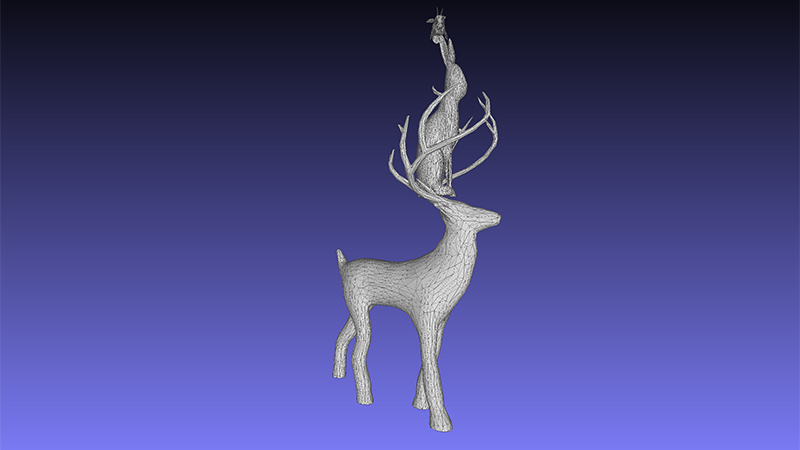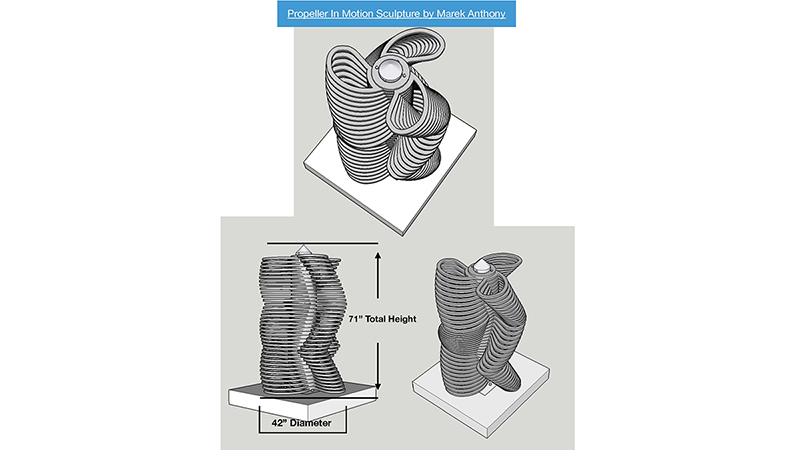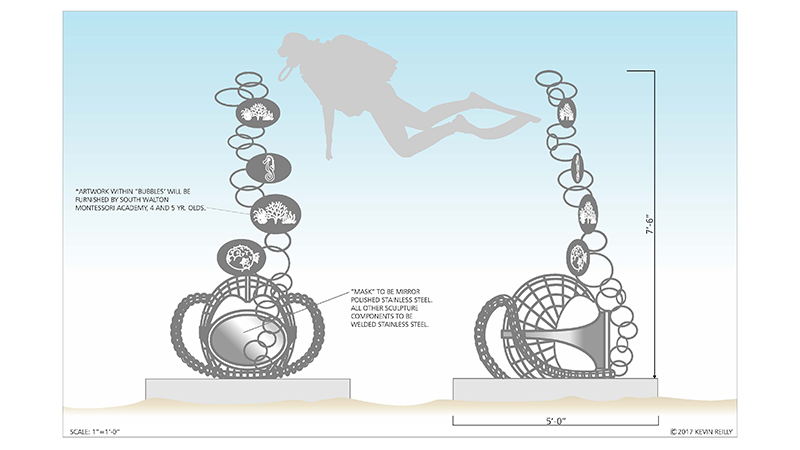Ocean lovers are always in search of the next big thing, whether that means skating the water’s surface on a hydrofoil bicycle, dining at the world’s largest underwater restaurant, or diving without oxygen tanks just for the thrill of it. Now, Florida is planning a different kind of marine destination worth exploring: the first permanent underwater art museum in the United States.
The new Underwater Museum of Art (UMA) will debut just off the coast of Grayton Beach. The South Walton area beach on Florida’s Gulf Coast is among the area’s most popular. For the first installation, the Cultural Arts Alliance of Walton County will place seven sculptures on the seafloor. The initial round will be lowered to the bottom using purpose-built boxes to precisely position them. Additional installations will be bolted on in modular fashion, allowing the entire museum to grow over time. At a depth of 50-60 feet, it’s designed to be explored by divers and ambitious freedivers. Although, surface-going visitors like kayakers and paddleboarders will no doubt enjoy the boon in marine life the UMA will provide.
- 1. Swara Skull by Vince Tatum
- 2. Self Portrait by Justin Gaffrey
- 3. Concrete Rope Reef Spheres by Evelyn Tickle’s
- 4. The Grayt Pineapple by Rachel Herring
- 5. Propeller in Motion by Marek Anthony
- 6. JYC’s Dream by Kevin Reilly
The museum’s purpose is, first and foremost, to showcase one-of-a-kind sculptures in a unique way. However, the real motive behind the installations is to foster marine life in the Gulf Coast. The vast majority of the seafloor in the Gulf of Mexico is a “barren sand flat” environment similar to an underwater desert. That lack of coral, rocks, and the like is ideal for swimmers, but is among the worst habitats for marine life to thrive. Artificial reefs are a proven way to attract fish and provide anchors for marine plants and invertebrates.
Numerous conservation societies have established similar underwater art installations around the world. Most notable are the Museo Atlantico in Spain’s Canary Islands and Mexico’s Museo Subacuático de Arte (MUSA) in Isla Mujeres and Punta Nizuc near Cancun. The latter features more than 500 permanent sculptures and exhibits, making it one of the most significant underwater attractions of its kind in the world.
Florida’s Underwater Museum of Art is scheduled to open in early- to mid-2018 with seven jury-selected sculptures for the first installation. The pièce de résistance is slated to be an artistic homage to Jacques Cousteau’s pioneering Aqua-Lung device that revolutionized modern scuba diving.
Image courtesy of Isla Mujeres, Mexico/Ratha Grimes/Flickr.









